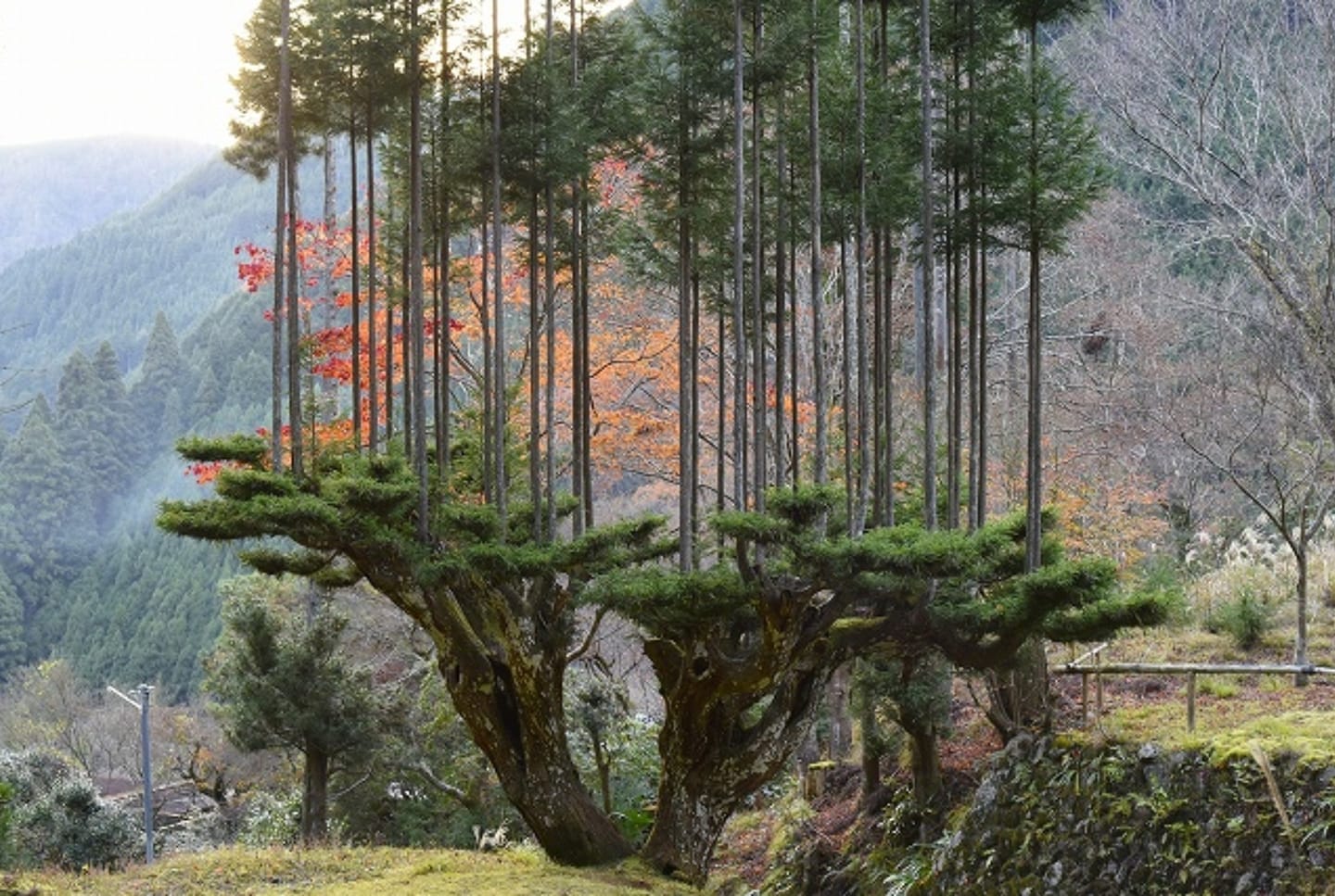Literally translating to platform cedar, daisugi is a 14th- or 15th-century technique that offers an efficient, sustainable, and visually stunning approach to forestry. The method originated in Kyoto and involves pruning the branches of Kitayama cedar so that the remaining shoots grow straight upward from a platform. Rather than harvesting the entire tree for lumber, loggers can fell just the upper portions, leaving the base and root structure intact. Although daisugi mostly is used in gardens or bonsai today, it originally was developed to combat a seedling shortage when the demand for taruki, a type of impeccably straight and knot-free lumber, was high.
Daisugi
